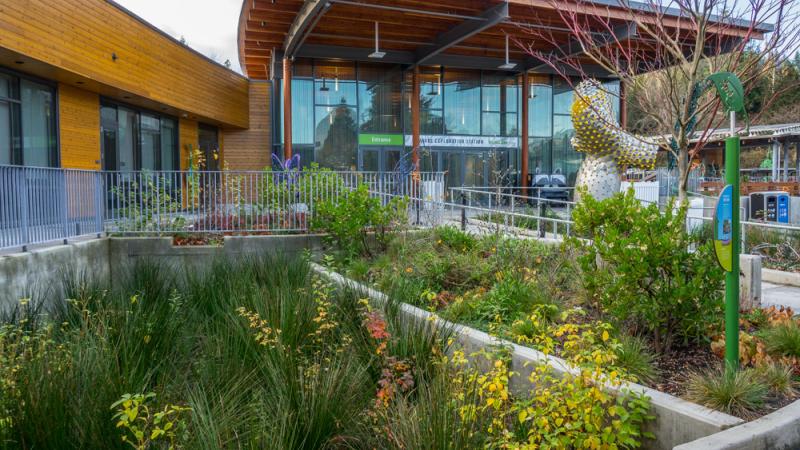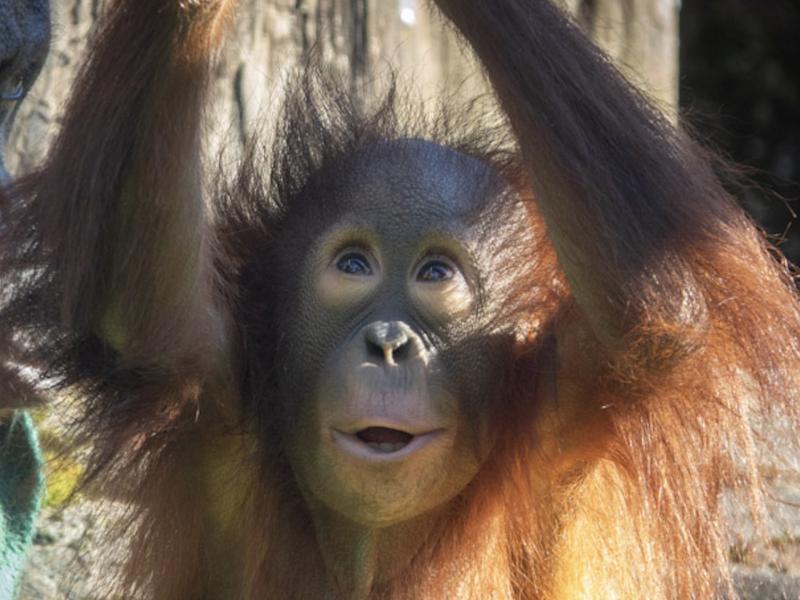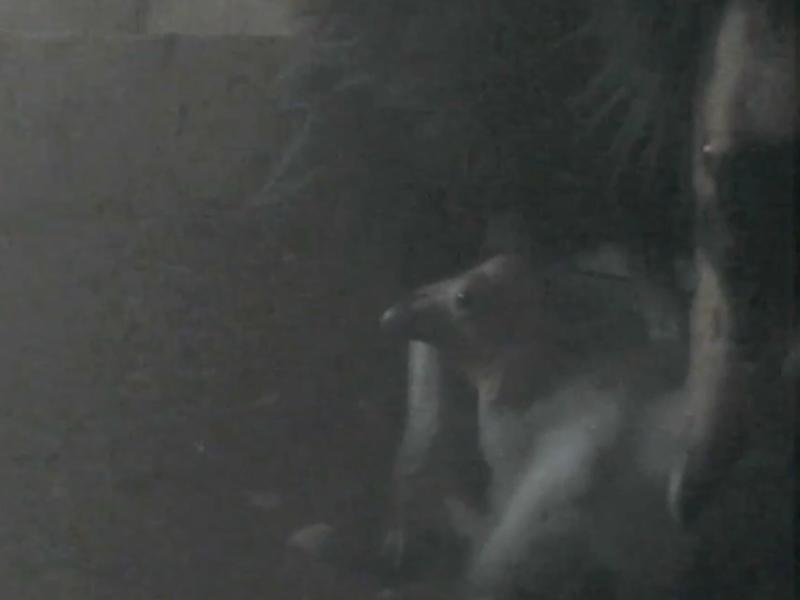Zoo education center earns two sustainable design honors

U.S. Green Building Council and AIA Portland honor zoo's environmental achievement
The Oregon Zoo's new education center — designed to inspire young minds and serve as a regional hub for conservation — added two more sustainable design accolades to its growing list of honors and awards last week.
On Oct. 31, the center earned LEED Platinum certification from the U.S. Green Building Council — the highest of the council's Leadership in Energy and Environmental Design standards and an internationally recognized benchmark for sustainable building practices. Two days later, Opsis Architecture, which led design efforts for the center, took home AIA Portland's prestigious "2030 Architecture" award recognizing design excellence aimed at reducing greenhouse gas emissions.
"These honors not only highlight the zoo's commitment to sustainability, but also its responsibility to the community," said Heidi Rahn, who oversees projects funded by the 2008 zoo bond measure promoting animal welfare and sustainability. "If we want a better future for wildlife, it's vital that we conserve natural resources and make sure our day-to-day operations and construction practices are environmentally sound."
While the zoo is honoring its promise to voters to save every dime, drop and kilowatt by replacing energy and water systems throughout the zoo, Rahn noted, the Education Center also teaches these concepts, with interactive demonstrations of sustainable technologies that visitors can adopt for use in their homes and businesses.
Earth-friendly design features at the center include the following:
Improved stormwater management
Rain gardens capture, slow down and clean stormwater before releasing to the Willamette River. Rainfall from the roof is routed to a 10,000-gallon underground storage tank. The water is then reused for flushing toilets, conserving potable water use.
Solar panels
The center features 760 solar panels on its roof and on the nearby zoo train platform, in part made possible with funding support from PGE's Renewable Development Fund program customers.
FSC-certified wood
Forests are home to 80 percent of the world's terrestrial biodiversity and they help to stabilize the earth's climate. By using wood certified by the Forest Stewardship Council, the center is helping to limit clear cuts, restrict the most hazardous chemicals and reduce erosion along rivers.
Energy-efficient lighting and HVAC systems
High-efficiency LED lighting and HVAC systems run through a digital control system. The center also features energy-efficient radiant floor heating.
Native plants and green roofs
Landscaping at the center includes 90 species of Willamette Valley native plants, which require less irrigation and provide food and shelter for local wildlife. The Wildlife Garden shelter and "bee hotel" both feature green roofs.
Bird-friendly lighting and windows
Millions of birds die each year from flying into windows, and Portland's location along the Pacific Flyway makes spring and fall migration periods especially deadly. At the education center, bird-friendly lights and fritted glass — identified with help from the American Bird Conservancy — help prevent window strikes.
Salvaged building materials
The landscape gates and wildlife garden shelter were built out of wood salvaged from the decommissioned Elephant Museum building. Pavers in the Wildlife Garden are salvaged from the old Elephant Plaza picnic area.
"We're very grateful to our design and construction partners, who helped make this vision a reality," Rahn said. "Especially our general contractor, Fortis Construction, and our design team led by Opsis Architecture, including Jones & Jones Landscape Architects, Catena, KPFF and PAE Consulting Engineers, Listen Acoustics, IQ Magic, Work as Play, and Halliday Associates."
The Education Center — the fifth of eight major projects funded by the zoo bond measure — provides a welcoming entry for the thousands of children who participate in zoo camps and classes each year, and serves as a regional hub, expanding the zoo's conservation education programs through collaborations with the U.S. Fish and Wildlife Service and other partners.
All of the zoo bond projects have a goal to achieve a minimum of LEED Silver certification, and the zoo's Veterinary Medical Center and Elephant Lands have already been certified LEED Gold.
More News

Jolene turns 2: Zoo to celebrate orangutan's 2nd birthday
The littlest member of the orangutan family is celebrating a big milestone this week: Jolene will turn 2 on Saturday.April 12, 2024

Seven chicks and counting: Zoo welcomes first condors of 2024
Seven fluffy chicks hatched last month at the Oregon Zoo’s Jonsson Center for Wildlife Conservation.April 5, 2024

Zoo seeks pika watchers for summer season
The zoo is recruiting volunteers to seek out one of the Columbia River Gorge’s fluffiest residents: the American pika.April 3, 2024

